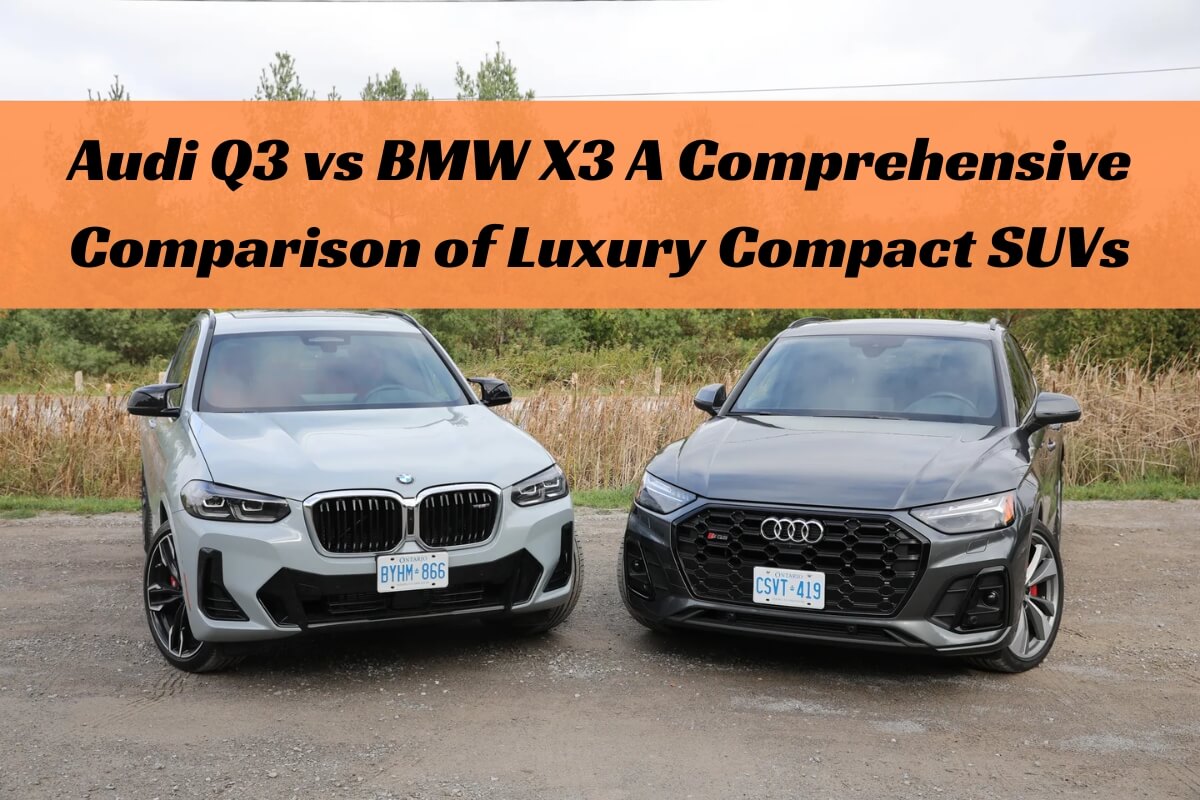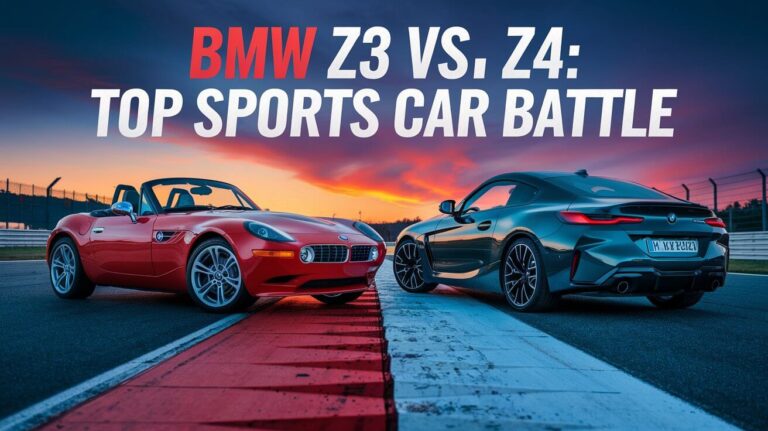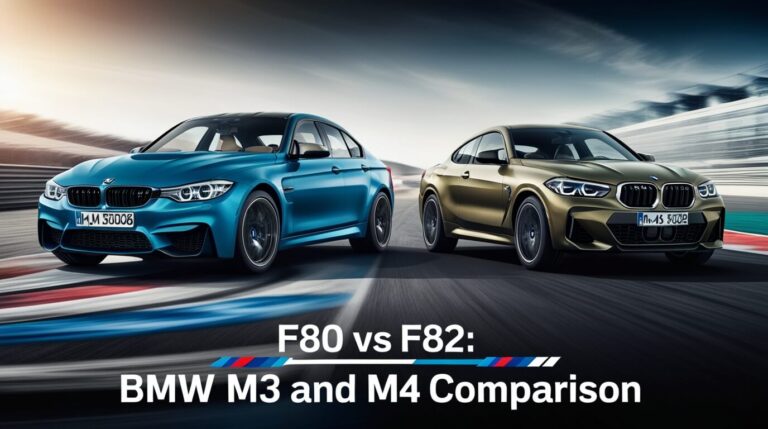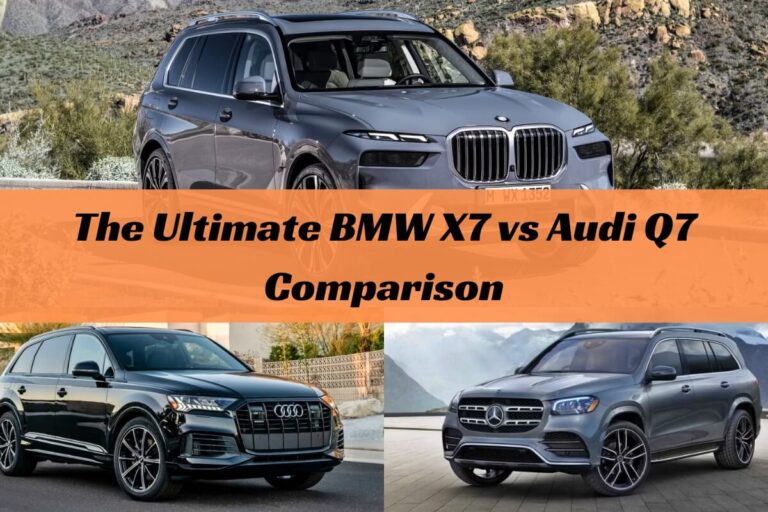
In today’s world, where luxury and practicality go hand in hand, the compact SUV segment has emerged as a popular choice for many car buyers. Among the leaders in this segment are two premium automakers, Audi and BMW, with their respective models, the Q3 and X3. But which one should you choose – the Audi Q3 or the BMW X3?
The Audi Q3 offers a more affordable entry point into the luxury SUV market, with a refined interior and a generous list of standard features, while the BMW X3 provides more powerful engine options, a larger cabin, and additional cargo space, albeit at a higher price point.
In this comprehensive comparison, we’ll delve into the key differences between these two vehicles, exploring their performance capabilities, interior features, exterior design, safety technologies, and pricing. Whether you’re in the market for a stylish daily driver or a capable weekend adventurer, this guide will help you make an informed decision.
Performance: Audi Q3 vs BMW X3 – Which One Packs More Punch?
When it comes to performance, both the Audi Q3 and BMW X3 offer a range of engine options to cater to different driving preferences and needs.
The Audi Q3 is powered by a 2.0-liter turbocharged four-cylinder engine that delivers 184 horsepower and 221 lb-ft of torque in the base model. However, if you opt for the Premium Plus or higher trims, you’ll get a more potent version of the same engine, producing 228 horsepower and 258 lb-ft of torque.
On the other hand, the BMW X3 lineup starts with a 2.0-liter turbocharged four-cylinder engine that generates 248 horsepower and 258 lb-ft of torque, providing a noticeable performance advantage over the base Q3. For those seeking even more power, the X3 also offers a 3.0-liter turbocharged inline-six engine that churns out an impressive 382 horsepower and 369 lb-ft of torque in the M40i trim. Additionally, BMW offers a 2.0-liter turbodiesel four-cylinder engine with 188 horsepower and 295 lb-ft of torque for those prioritizing fuel efficiency.
When it comes to acceleration and top speed, the more powerful X3 models have a clear edge. The X3 M40i can sprint from 0 to 60 mph in just 4.4 seconds, while the Q3’s best acceleration time is around 7 seconds.
In terms of fuel economy, the Audi Q3 and BMW X3 are closely matched. The Q3 is rated at 22 mpg in the city and 29 mpg on the highway, while the X3 with the 2.0-liter gasoline engine achieves 23 mpg city and 29 mpg highway.
Both vehicles offer advanced all-wheel-drive systems – the Audi Q3 features the renowned quattro AWD, while the BMW X3 is available with the xDrive intelligent AWD system. These systems provide enhanced traction and stability, making them capable companions for various driving conditions.
When it comes to handling and ride quality, the BMW X3 has a slight edge due to its more sophisticated suspension setup and slightly larger dimensions, which contribute to a smoother and more composed ride. However, the Q3 is no slouch and offers a well-balanced driving experience that should satisfy most drivers.
Interior Comfort and Convenience: Audi Q3 vs BMW X3
Step inside the Audi Q3 and BMW X3, and you’ll be greeted by premium cabin designs that exude luxury and refinement. However, there are some key differences worth noting.
The Audi Q3 comes standard with leather upholstery, adding an upscale touch to the interior. In contrast, the BMW X3 offers leatherette as standard, with leather being an optional upgrade. Both vehicles feature high-quality materials and attention to detail befitting their premium status.
When it comes to passenger space, the BMW X3 has a slight advantage. It offers more legroom for both front and rear passengers, providing a more comfortable experience for taller occupants or those planning to frequently transport adults in the rear seats.
In terms of cargo capacity, the X3 once again comes out on top. With the rear seats in place, it offers 28.7 cubic feet of space, compared to the Q3’s 23.7 cubic feet. Fold down the second row, and the X3 provides a cavernous 62.7 cubic feet of cargo room, while the Q3 maxes out at 48 cubic feet.
Both vehicles are well-equipped in terms of interior features and amenities. The Audi Q3 comes standard with a panoramic sunroof, adding a sense of airiness to the cabin, while it’s an optional extra on the BMW X3. Additionally, the Q3 offers standard heated front seats, while they’re optional on the X3.
When it comes to infotainment and connectivity, the two vehicles are closely matched. Both feature user-friendly touchscreen displays, with the X3 offering a slightly larger 10.25-inch screen as standard, compared to the Q3’s 8.8-inch display. Apple CarPlay and Android Auto integration are available on both models, allowing seamless smartphone connectivity.
Exterior Design and Dimensions: Audi Q3 vs BMW X3
The exterior design of the Audi Q3 and BMW X3 reflects the distinct styling philosophies of their respective brands. The Q3 sports a bold and angular design language, with sharp lines and an aggressive stance that exudes a sense of sportiness.
In contrast, the BMW X3 embraces a sleeker and more rounded aesthetic, with a familiar kidney grille and sculpted lines that give it a more elegant and sophisticated presence on the road.
When it comes to dimensions, the BMW X3 is the larger of the two vehicles. It boasts a longer wheelbase (112.8 inches vs. 105.5 inches for the Q3) and greater overall length (185.9 inches vs. 176.6 inches for the Q3), translating into more interior space and cargo capacity.
The Audi Q3 is available in both standard and Sportback body styles, with the latter featuring a sloping roofline that gives it a more coupe-like silhouette. The BMW X3, on the other hand, is offered only in a traditional SUV shape.
Both vehicles offer a wide range of exterior color options, allowing buyers to personalize their rides. The Audi Q3 stands out with unique hues like Pulse Orange and Turbo Blue, while the BMW X3 offers a more traditional palette, including shades like Phytonic Blue and Brooklyn Grey.
Safety and Driver Assistance Features: Audi Q3 vs BMW X3
Safety is a top priority for both Audi and BMW, and both the Q3 and X3 come equipped with a comprehensive suite of advanced safety and driver assistance technologies.
The Audi Q3 comes standard with automatic emergency braking, blind spot monitoring, and adaptive cruise control, providing an extra layer of protection and convenience on the road. Additionally, it offers an optional surround-view camera system for enhanced visibility during parking maneuvers.
Similarly, the BMW X3 is equipped with standard automatic emergency braking and blind spot monitoring. However, adaptive cruise control and a surround-view camera are optional extras, allowing buyers to tailor their safety and convenience features to their preferences.
Both vehicles offer additional safety features like lane departure warning, forward collision warning, and automatic high beams, further enhancing their safety credentials.
While official safety ratings from the National Highway Traffic Safety Administration (NHTSA) and the Insurance Institute for Highway Safety (IIHS) are not yet available for the latest model years, both the Audi Q3 and BMW X3 have historically performed well in crash tests, earning top ratings for their respective segments.
Pricing and Trim Levels: Audi Q3 vs BMW X3
When it comes to pricing, the Audi Q3 holds an advantage as a more affordable entry point into the luxury compact SUV segment. The base Premium trim of the Q3 starts at $36,400, while the BMW X3 kicks off at $45,400 for the base sDrive30i trim.
As you move up the trim levels, the price gap between the two vehicles narrows. The top-of-the-line Audi Q3 Prestige S line starts at $43,800, while the range-topping BMW X3 M40i commands a starting price of $57,800.
Both Audi and BMW offer various packages and options that can further increase the price tag, allowing buyers to customize their vehicles with additional features and amenities.
It’s worth noting that leasing and financing options are available for both vehicles, potentially making them more accessible to a broader range of buyers. Additionally, factors such as resale value and long-term ownership costs should be considered when evaluating the overall value proposition of each vehicle.
Featured Snippet: What are the starting prices for the Audi Q3 and BMW X3?
The starting prices for the Audi Q3 and BMW X3 are:
- Audi Q3: $36,400 (Base Premium trim)
- BMW X3: $45,400 (Base sDrive30i trim)
The top-of-the-line trims have the following starting prices:
- Audi Q3 Prestige S line: $43,800
- BMW X3 M40i: $57,800
Conclusion
In the battle of the luxury compact SUVs, the Audi Q3 and BMW X3 both bring their unique strengths to the table. The Q3 appeals to buyers seeking an affordable entry point into the premium SUV market, offering a well-appointed interior, a generous list of standard features, and a refined driving experience. On the other hand, the X3 caters to those seeking more powerful engine options, increased interior space, and a more dynamic driving experience, albeit at a higher price point.
Ultimately, the choice between these two vehicles comes down to individual priorities and preferences. If budget is a primary concern and you value a well-equipped interior with a decent amount of power, the Audi Q3 could be the perfect fit. However, if you’re willing to stretch your budget for more performance, greater interior room, and a more upscale driving experience, the BMW X3 might be the better option.
Regardless of your decision, both the Audi Q3 and BMW X3 offer impressive packages of luxury, performance, and practicality, ensuring that you’ll enjoy a premium driving experience with either choice.






